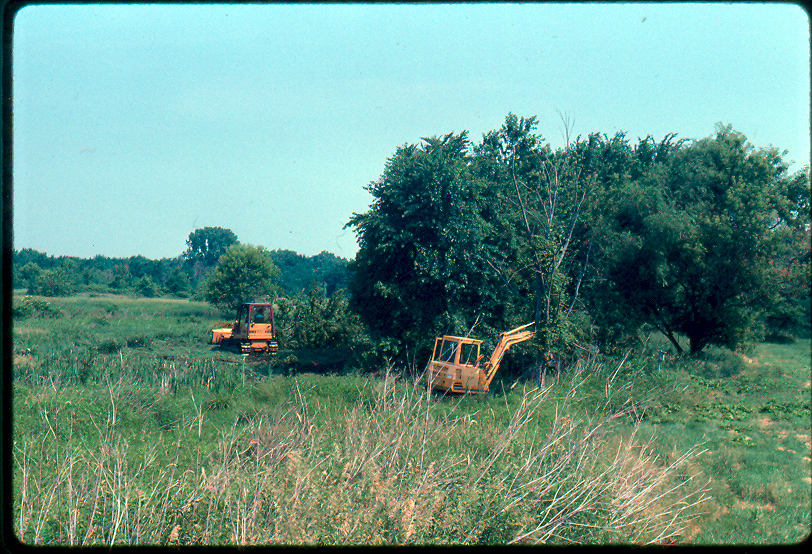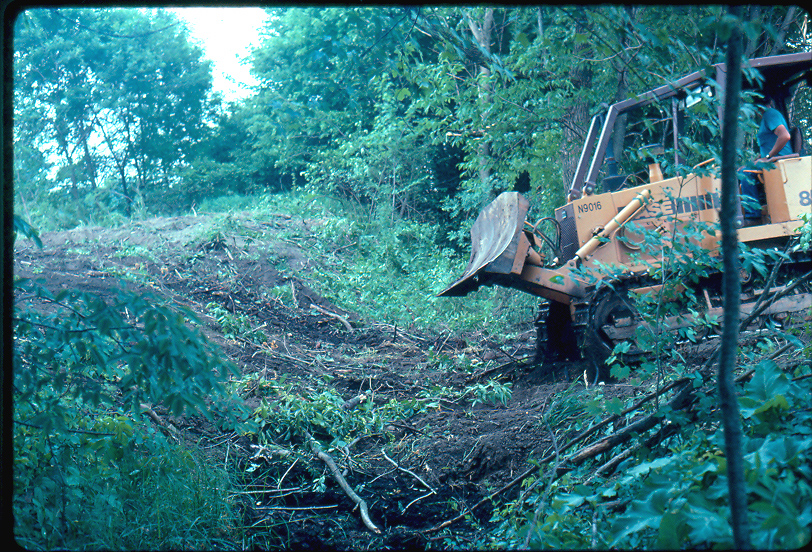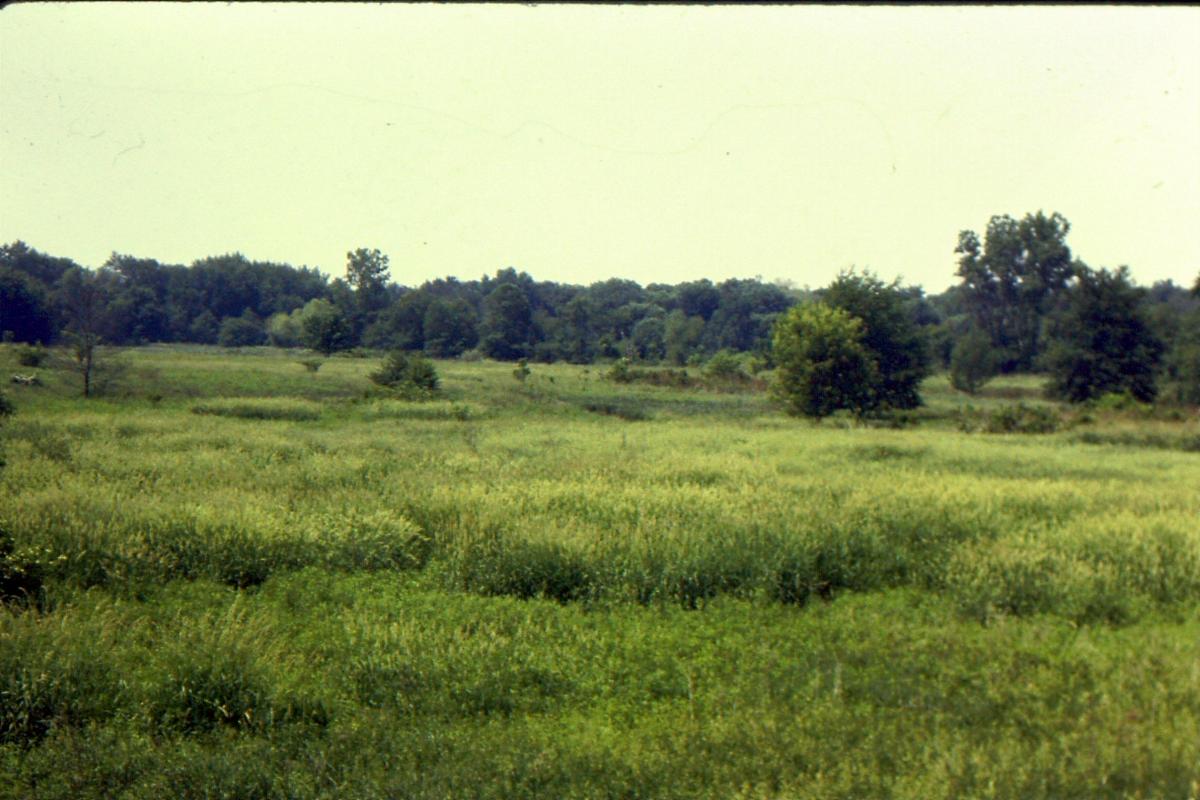Shew Wetland Complex
The Shew Wetland Complex restoration was initiated in the summer of 1994, with USFWS funding support. A series of ditch plugs (small dikes to block existing surface drainage ditches), and water control structures (to control the presence and amount of water) were installed. Reed canary grass was treated with herbicide prior to inundation of the deeper water areas.



Excavating and piling some of basin bottom muck established waterfowl nesting islands and provided for more variation in water depths. By the end of 1995 there were three separate marsh wetland communities totaling 9 acres.
The surrounding upland areas are maintained in herbaceous cover, thus providing conditions more representative of the “prairie pot-hole” region of the upper Great Plains. The water level of one of these wetlands is seasonally managed by an active water control structure. Beginning early May the existing water level is gradually reduced in stages, thus providing mud flats for migrating shoreline birds to forage. By the end of May the water level has been completely lowered. This serves two other purposes: a) it eliminates any presence of bullfrogs and fish which prey on the eggs of the adjacent populations of blue-spotted salamanders; b) populations of pin oak and cardinal flower are able to survive and flourish in the “green-tree reservoir” portion of this wetland basin. In early August the water control structure is closed to allow the basin to fill with water from the autumn rains. In the autumn the pin oaks begin shedding their acorns, which float on the water. This provides calorie-rich food for migrating wood ducks.
